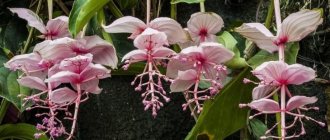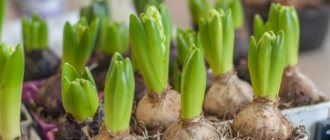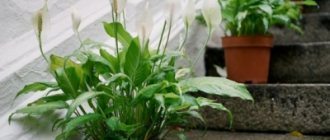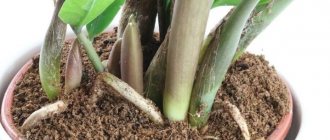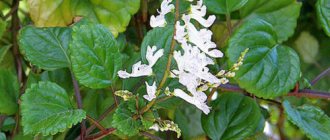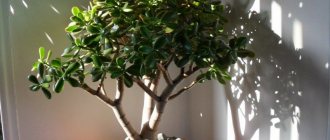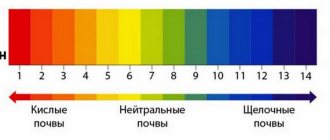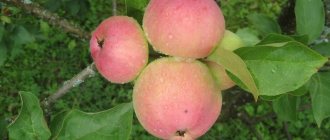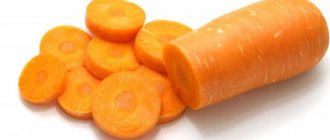- How to prepare conifers for wintering: conditions for successful wintering of conifers
- Conditions for successful wintering of coniferous plants: moisture-recharging irrigation
- Lack of fertilizing since late summer
- How to prepare conifers for wintering: treatment against diseases and pests
- How to prepare conifers for wintering: mulching conifers
- Sheltering conifers from snow and frost
- A separate issue is horizontal junipers
- Protecting conifers from bright sun in early spring
- Video: how to prepare conifers for winter
How to prepare conifers for wintering: conditions for successful wintering of conifers
Recently, the range of coniferous trees and shrubs has been striking in its diversity. In spring and autumn, the shelves of supermarkets and gardening stores are filled with various types of junipers, thujas, yews, cypresses, pines and spruces. Brought from distant countries, often with completely different climatic conditions, not all of them are able to withstand our harsh winters. Therefore, these evergreens begin to prepare for cold weather long before it arrives. In this article we will talk about how to prepare conifers for wintering .
Work in the flower garden in autumn: how to prepare a flower garden for winter (read more)
How to prepare conifers for wintering.
Coniferous plants grown in local nurseries take root and overwinter more easily in our country. They are usually sold in containers and experience virtually no stress during transplantation, so adaptation, preparation for winter and subsequent wintering take place in “local” plants, usually without surprises.
But, regardless of the origin and type of coniferous plant, preparation for winter is a prerequisite for young coniferous seedlings. Next are 7 conditions, the fulfillment of which will ensure a successful winter for your pets.
Conditions for successful wintering of coniferous plants: moisture-recharging irrigation
During the entire growing season, the soil of conifers should not be allowed to dry out - these are moisture-loving plants, and a lack of moisture will affect their general condition and endurance. Therefore, timely watering, especially in the absence of rain, is mandatory.
How to cover plants for the winter: methods and materials (read more)
But at the end of autumn it is also necessary to carry out moisture-recharging irrigation. Young coniferous plants planted this or last year especially need it. Mature trees and shrubs have a sufficient root system to independently obtain moisture, but if the summer was dry, then they will have to be watered for the winter.
Preparing the garden for winter: gardening in the fall (read more)
In spring, the needles wake up quite early, when the roots cannot yet work at full strength and often burns occur at this time. The amount of water for irrigation depends on the size of the tree or shrub, but, on average, it is 5-7 buckets per plant. Ordinary trees will tell you when to carry out water-recharging irrigation: as soon as most deciduous trees lose their leaves, it’s time to water coniferous trees.
How to preserve thuja in winter?
By nature, thuja is endowed with high frost resistance and the ability to withstand the coldest winds. However, recently, breeders have developed ornamental varieties that do not have such characteristics. Also, young trees that are not yet strong enough need shelter for the winter.
Video: how to cover thuja seedlings for the winter
How to properly cover a thuja for the winter?
When preparing thuja for winter, you need to take care not only of covering the roots, but also of protecting the evergreen crown, which during the winter cold can suffer from cold winds, large amounts of snow and bright sun at the end of winter.
Sheltering a thuja for the winter is done as follows:
- First of all, insulate the soil around the perimeter of the root system. To do this, lay mulch material in a layer of 10 to 30 cm. A more precise thickness of the mulch is determined based on the weather conditions of the region where the overseas beauty grows. The best covering material for thuja is peat, rotted manure, straw, compost, soil from under coniferous trees, and dry leaves.
- Small trees are covered with 5-liter plastic bottles: the bottom of the container is cut off, and then the resulting cap is placed on top of a young coniferous tree.
- The crown of adult trees is wrapped with thick paper, lutrasil or agroterm, which is secured with rope or wire.
- To prevent branches from bending or breaking under the weight of accumulated snow, the shelter is regularly cleaned of precipitation.
- When exposed to bright sunlight, the bark of trees becomes severely burned. To prevent such damage, shields are installed on the sunny side in the second or third decade of February.
- The shelter is gradually removed only after spring warmth has established itself.
The level of decorativeness in the next season depends entirely on how well the preparation work of the thuja for winter was carried out.
Video: how to cover a thuja for the winter
How to store thuja in a pot?
Conifers under two years old are often grown in pots or containers. Before the arrival of winter, the plant is fed and then transferred to an unheated room, where the temperature ranges from +4 to +10 C. The thuja, pre-wrapped in paper, will overwinter well in a bright closet or on the balcony.
Lack of fertilizing since late summer
Fertilizers containing nitrogen are applied only until mid-summer. The fact is that nitrogen stimulates the growth of needles and branches, but in order for the plant to overwinter well, the shoots must ripen. Therefore, from mid-July to August, emphasis should be placed on phosphorus-potassium fertilizers. For the same reason, complex fertilizers cannot be used at this time, since they all contain nitrogen in one proportion or another.
Mineral fertilizer "Autumn" contains potassium, calcium, phosphates, boron and magnesium and can be used for coniferous plants. However, they need less fertilizer than fruit and berry crops, so the concentration should be twice as weak as indicated in the instructions. From the end of August, fertilizing for conifers is stopped.
Fertilizers and fertilizers
Conifers need adequate nutrition, but not all fertilizers benefit the crops. They must meet the following criteria:
- minimum nitrogen content;
- magnesium in preparations should be in an easily digestible form;
- a large number of microelements will be beneficial to crops.
If the feeding is chosen incorrectly, the needles will suffer. According to the advice of experienced gardeners, it is better not to use fertilizers at all than to ruin the plantings through erroneous actions.
How to prepare conifers for wintering: treatment against diseases and pests
One of the important measures in preparing coniferous plants for winter is preventive treatment (spraying). Even if there were no noticeable diseases or pests on the plants, preventive spraying is still necessary.
First, you need to clean the plant - remove all dried or broken branches with pruning shears, remove damaged needles from thujas. If the plant is large and dense, it is necessary to move the branches apart, because it is near the trunk that there may be spoiled needles. All cut out parts must be removed from the site, or better yet, burned.
On a note! Formative pruning, if used, is not advisable in the fall. It is better to postpone this event until spring.
To prevent and treat fungal diseases, coniferous plants must be sprayed with a 1% solution of copper sulfate or Fitosporin. How to properly dilute Fitosporin is written in detail in the instructions included with the drug, which cannot be said about copper sulfate.
To obtain a 1% solution, you need to dilute 100 g of powder in 10 liters of water. To do this, pour the powder into a plastic bucket (do not use iron utensils) and mix with a small amount of water. Then we add the volume to 10 liters by adding water heated to 45-50°C. The drug dissolves better in warm water. Before spraying, the mixture must be filtered. Treatment is carried out in dry, windless weather, in the morning or evening. The air temperature should not be lower than +5°C.
Today you can find special caps for conifers of different sizes and shapes on sale.
After treatment with copper sulfate, after about two weeks you can spray coniferous plants against pests. For prevention, you can use any insecticide for a complex of pests, or, if harmful insects have occurred, use a special product.
How to prepare conifers for wintering: mulching conifers
For the winter, it is necessary to mulch the tree trunks of coniferous plants. This measure will protect their roots in frosty, snowless winters. The mulch is laid out around the perimeter of the crown in a layer of 5-7 cm. This is especially important for young conifers and conifers brought from other regions, for which the process of adaptation to local conditions has not yet been completed.
For mulch, you can use various organic materials (peat, straw, sawdust, grass clippings or pine litter from the forest). When collecting litter in the forest, be sure to pay attention to the trees - only under healthy spruce and pine trees can you collect litter. Otherwise, there is a chance of infecting your plants. In the spring, the mulch should be removed - this way the soil will warm up faster and there will be no risk of the roots damping off.
Sheltering conifers from snow and frost
Thujas, yews, junipers and cypresses may be threatened by snowfalls in winter. Heavy snowfall, even if it doesn’t break the branches, will scatter them in different directions and the tree will lose its shape. To prevent this from happening, it is necessary to wrap the plant in a spiral with synthetic twine, lightly pressing the branches against the trunk.
Young coniferous plants that have been growing on the site for less than three years must be protected from frost. The best material for insulation is burlap, as it allows air to pass through well and reliably protects from frost. Many gardeners use regular gauze, wrapping it around the plant in two layers and securing it with twine. You can use agrofibre, but on condition that it will be possible to remove it in early spring, otherwise there is a risk of damping off.
In special gardening stores, netting for covering coniferous plants began to appear. This is the ideal option - cover it and forget it. For those who care about the aesthetics of their garden, you can find special caps for conifers of various sizes and shapes on sale. They are very comfortable, simply put on the plant and tightened with a cord at the bottom. The caps are made of special breathable fabric and have a very nice appearance.
Conifers that have lived on a site for more than three years, as a rule, have already adapted to the environment and do not need shelter.
Young conifers planted this year do not have time to take root firmly in the ground by winter. They need to be strengthened with stretch marks. To do this, 3-4 strong ropes are tied to the trunk. Along the perimeter of the seedling, pegs are driven into the ground, to which the free ends of the ropes are attached. Such a measure will not be superfluous - the secured seedlings will withstand strong snowstorms and will not bend under the snowfall.
Troubles during the winter months
If you took into account the previous tips, then your pets will feel quite comfortable in winter, but the care does not end there. Winter weather brings many surprises, and you need to deal with them in time.
First surprise: heavy snow
Sometimes there are heavy snowfalls in winter. Wet snow settles heavily on the conifers, causing skeletal branches to break and thin ones to break off. If your pet is covered with a sticky and wet snow cap, do not try to shake it off by tilting the branches or shaking the trunk. At this time, the bark and branches are so fragile that you will provoke cracking. You need to wrap the end of the board with a soft cloth and pry it over each branch of an adult tree, gently swinging it up and down. Brush off all branches in the access zone of your growth with a stiff brush or broom, moving from the tips to the trunk.
The crown of spherical and columnar varieties can be protected by tying it with twine. Just do not pinch the branches so as not to disrupt the circulation of juices. The twine should press the crown tightly against the trunk, but not squeeze.
The crown, tied with twine, becomes compact and dense, preventing snow from getting into the middle, which helps to survive the winter without breaking.
Surprise two: freezing rain
With the contrast between day and night temperatures, tree branches can become covered with an ice crust. It has enough weight, tilting its paws and threatening the safety of the plant. You won’t be able to shake off such beauty, as it sticks tightly to the needles. In this case, the supports that you used in the summer to support fruit trees will come to the rescue. Place them under any branches that have bent too low to prevent them from breaking. All that remains is to wait for a sunny day for the ice to slide under the rays on its own.
Surprise three: gusty wind
Some areas experience squally winds in winter. It is not dangerous for low-growing, dwarf trees or creeping shrubs, but vertical thujas, tall cedars or spruce trees can easily be uprooted (especially on light sandy loam soils).
If weather forecasters have announced a storm warning, play it safe by putting up guy ropes. They come in two types: fixed to stakes and anchor type.
The essence of the first option is that thick stakes are driven into the ground on four sides near the tree, the height of which is more than half the height of the trunk. A twine is pulled from each support to the trunk. It is not tied on bare bark, but the trunk is first wrapped with roofing material or a wooden block is placed at the place of tying. True, it will not always be possible to drive stakes into frozen ground in winter, so conifers are strengthened in this way in the fall, especially recently transplanted large ones.
With the help of an anchor stretch, you can not only protect the tree from gusts of wind, but make it grow strictly vertically
The second type - anchor - involves the installation of steel guy wires, which are attached to the tree at one end and pulled onto the anchors at the other. Anchors should be located outside the root system. To protect the trunk from steel, you need to wrap the tree with thick burlap, and use wooden pads on top of it.
Surprise four: February sun
Even the most resistant conifers by the end of winter run the risk of freezing or, conversely, getting burned. At this time, the weather is unstable, and often the sun shines so brightly for days that it provokes an early awakening of the roots. They begin to actively feed the crown, expecting immediate warmth, and then the so-called return frosts can appear. You cannot stop the flow of sap, but you can cover the crown with a thick non-woven material, like lutrasil, or at least put canvas potato bags on the young seedlings.
To prevent the ground from thawing quickly, mulch it with sawdust. Their white color will reflect the sun's rays, and the roots will not awaken as quickly. But when stable heat sets in, the sawdust must be removed immediately so that the plant does not dry out.
Without covering with lutrasil or other non-woven material, the crown of many rare conifers may not withstand the test of severe frosts
Another danger lies in the sun's rays, which burn tender young needles. Therefore, at the end of winter, all annual seedlings and exotic conifers are covered from the south with shields or the crown is completely wrapped in burlap.
A separate issue is horizontal junipers
I would also like to say something about horizontal junipers. These are low-growing plants, the lower branches of which spread along the ground, due to which they are considered ground cover. The culture is represented by all kinds of miniature and dwarf plants with interesting colored needles - from bright green, like the “Cossack” and “Prince of Wales” junipers, to blue, like the “Blue Chip” or “Blue Alps”.
Young coniferous plants that have been growing on the site for less than three years must be protected from frost.
Horizontal junipers do not need shelter, but in the spring, when the snow melts, the lower shoots often remain in water for a long time, and this can negatively affect the development of plants. In the fall, when preparing the garden for winter, you need to place large stones or bricks under the lower branches of the juniper, lifting the branches from the ground. It is not advisable to use boards or wooden logs, since the wood gets wet and various pests hibernate in the bark.
How to check the winter hardiness of conifers?
You can reduce the likelihood of winter troubles to zero already at the stage of purchasing seedlings. If you purchase thujas, spruces, and junipers from domestic nurseries, where they grew for several years in the same climatic conditions as in your area, then problems with winter hardiness will disappear. Weak crops freeze out already in the first year after planting in the nursery, so they simply do not reach the shelves.
But more often we purchase planting material at the market, where it is impossible to check whether the seller provided accurate information about the growing conditions of the seedlings. And even if all the plants were grown in the local climate, there is no guarantee that they were not overfed with nitrogen fertilizers to accelerate growth. And excess nitrogen significantly reduces the immunity of crops and leads to freezing.
Therefore, the owners themselves must take care of the conifers, preparing them for hibernation at the end of autumn.
In small areas, different types of dwarf pine coexist perfectly, which stands out for its winter hardiness and ability to withstand snow loads
Among the crops that are more damaged than others in winter, the leaders are arborvitae, firs (except Siberian and Wicha), metasequoias, cypresses and cypress trees. In areas with a harsh climate, it is better not to plant these crops or be prepared for the fact that they will have to be protected from frost every winter.
The list of the most unpretentious coniferous plants includes:
- Spruce (except Eastern and Brewer);
- Cedars;
- Larch (except Western);
- Pines (except Thunberg);
- Junipers (except Turkestan and Zeravshan);
- Hemlock;
- Western thuja.
The remaining varieties need to be selected taking into account the duration and severity of your winters.
Protecting conifers from bright sun in early spring
All coniferous plants that do not shelter for the winter may suffer from the bright spring sun. Burns of pine needles occur not so much from the sun itself, but from the sun's rays reflected from the snow. In the spring, experienced gardeners sprinkle the snow around their conifers with soil stored in the fall or with ash. This is a good way to protect coniferous plants from burns, but with repeated snowfalls it is quite labor-intensive.
Most types of coniferous plants grow and develop well even in the most difficult climatic zones. But the harsher the climate, the more care these evergreens will require from you. Particular attention should be paid to preparing for winter. But, as you can see, there is nothing complicated here either - ordinary procedures that should not be neglected. By following all the preventive measures described above, you will get rid of possible problems with wintering your coniferous plants and ensure their health for the entire next season.
Spraying the garden in autumn: photos, videos, eradication treatment (read more)


